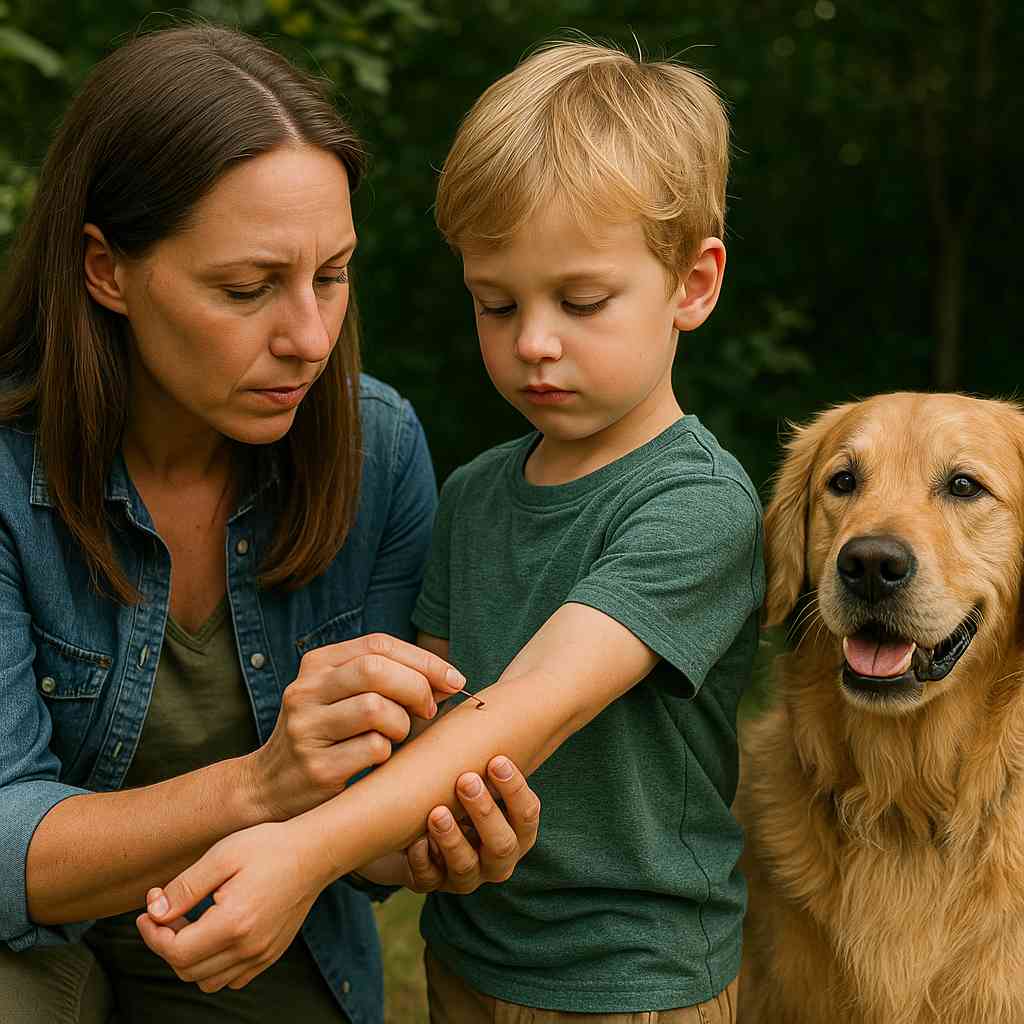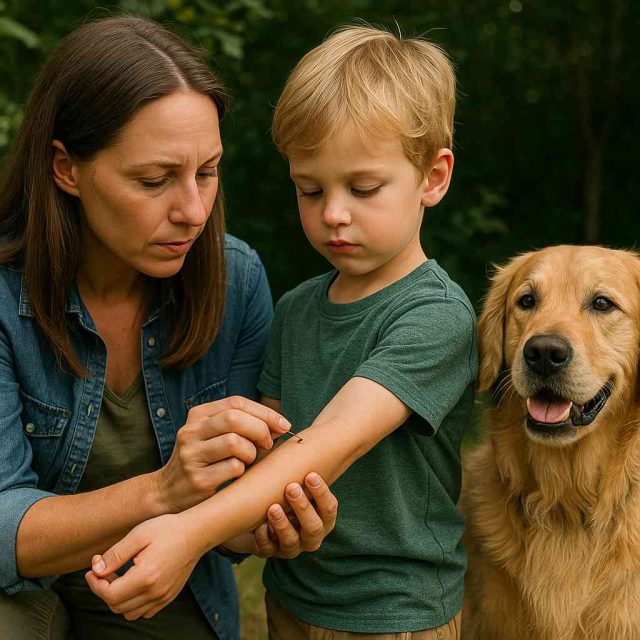
Lyme Disease is a growing concern for families who enjoy the outdoors. As tick populations increase across the U.S., so does the risk of contracting this serious and often misunderstood illness. Whether you’re hiking local trails or just playing in your backyard, it’s critical to understand how Lyme Disease spreads, how to check for ticks, and what to do if you find one.
Table of Contents
- What Is Lyme Disease and How Is It Transmitted?
- Signs of Lyme Disease in Humans and Pets
- How to Properly Check for Ticks After Outdoor Activities
- Prevention Tips and When to Seek Medical Help
What Is Lyme Disease and How Is It Transmitted?
Lyme Disease is caused by the bacterium Borrelia burgdorferi, transmitted to humans through the bite of infected blacklegged ticks, also known as deer ticks. These ticks are most active during the warmer months, particularly from April through October. However, with warmer winters and shifting climates, tick season is expanding.
Ticks must typically be attached for 36 to 48 hours to transmit the bacterium, which means early detection and removal can prevent infection. Yet, due to their small size—especially in the nymph stage—many people don’t notice a tick until it’s been embedded for some time. Pets like dogs and outdoor cats are especially vulnerable and can bring ticks into the home.
According to the CDC, approximately 476,000 Americans are diagnosed and treated for Lyme Disease each year. Regions like the Northeast, Upper Midwest, and Pacific Northwest report the highest number of cases, but tick populations are expanding into new areas.
Signs of Lyme Disease in Humans and Pets
One of the most recognizable early signs of Lyme Disease is a circular rash that appears around the site of the tick bite. Often called a “bull’s-eye” rash, it may appear 3 to 30 days after the bite. However, not everyone with Lyme Disease gets or notices a rash.
Other common symptoms in humans include:
- Fever and chills
- Headache
- Fatigue
- Muscle and joint aches
- Swollen lymph nodes
If untreated, Lyme Disease can lead to more serious complications, including facial palsy, heart palpitations, arthritis, and neurological issues.
Pets, especially dogs, may show different symptoms. These can include:
- Lameness or joint swelling
- Decreased appetite
- Fever
- Fatigue or lethargy
- Enlarged lymph nodes
Cats are less commonly diagnosed, but they can still be affected. If your pet shows any of these signs and you’ve been in a tick-prone area, consult your veterinarian.
How to Properly Check for Ticks After Outdoor Activities
Checking for ticks is one of the most effective ways to prevent Lyme Disease. After spending time in wooded, grassy, or brushy areas, it’s important to conduct a thorough tick check as soon as possible.
For people, focus on the following areas:
- Behind the ears
- Scalp and hairline
- Underarms
- Belly button
- Around the waist
- Behind the knees
- Groin area
Use a mirror or ask for help to check hard-to-see areas. Showering within two hours of being outdoors can also help wash away unattached ticks and make it easier to spot them.
When checking pets, use your hands to feel for small bumps or irregularities. Pay close attention to:
- Around the ears
- Neck and collar area
- Between toes
- Under the tail
- Groin and belly
Use a fine-toothed comb to inspect fur, especially on long-haired animals. If you find a tick, use tweezers to grasp it as close to the skin as possible and pull upward with steady pressure. Clean the area with antiseptic and monitor for signs of infection.
Prevention Tips and When to Seek Medical Help
Preventing tick bites is your first line of defense. The CDC recommends using insect repellents that contain DEET, picaridin, or oil of lemon eucalyptus. Treating clothing and gear with permethrin can also deter ticks.
Other preventive steps include:
- Wearing long sleeves and pants when hiking
- Tucking pants into socks
- Staying on clear, well-traveled trails
- Removing leaf litter and brush near your home
- Using veterinarian-approved tick prevention on pets
If you or a family member has been bitten and develops symptoms of Lyme Disease, seek medical attention promptly. Early diagnosis is key to effective treatment, which usually involves a course of antibiotics. Branded drugs like doxycycline or amoxicillin are commonly prescribed. Delayed treatment can lead to more complex symptoms and longer recovery times.
For trustworthy health content and personal stories from those affected by chronic illnesses, visit the HealingWell.com top articles section.
If you’re unsure whether a bite or symptom is cause for concern, consult your provider through Healthcare.pro, which helps match patients with certified medical professionals.
Conclusion
Lyme Disease is preventable, but only if families remain vigilant. Knowing how to check for ticks, recognize early symptoms, and take preventive measures can safeguard your health and that of your pets. Especially during peak tick season, routine checks and awareness are essential parts of everyday outdoor safety.
Don’t wait until symptoms appear to act. Make tick checks a family habit and talk to your healthcare provider if you have concerns.
FAQs
How soon after a tick bite do Lyme Disease symptoms appear?
Symptoms may develop anywhere from 3 to 30 days after a bite, depending on the stage of infection.
Can my dog get Lyme Disease from a tick?
Yes, dogs are highly susceptible and should be on vet-approved tick prevention year-round.
Is Lyme Disease contagious between people or pets?
No, Lyme Disease is not spread from person to person or pet to person. It requires a tick vector.
What should I do if I find a tick on my child?
Remove the tick with tweezers, clean the area, and monitor for symptoms. Save the tick in a sealed bag if testing is needed.
Where can I get more information on Lyme prevention?
The CDC website offers excellent guidelines, and your local health department may have region-specific updates.
This content is not medical advice. For any health issues, always consult a healthcare professional. In an emergency, call 911 or your local emergency services.




